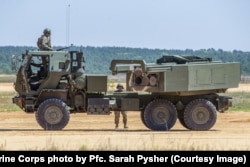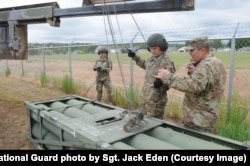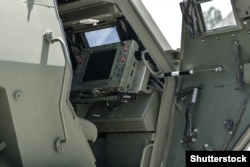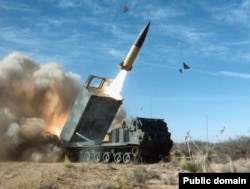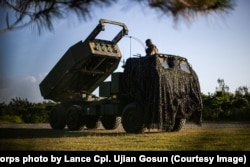Washington has agreed to supply Ukraine with a powerful rocket artillery system. Here's how the weapon works and why its full power will not be available to Kyiv.
The photo above shows the M142 High Mobility Artillery Rocket System (HIMARS) that Washington has agreed to send to Ukraine. It is unknown how many will be provided, but the weapon will be a significant upgrade from the rocket systems currently used by Kyiv to combat the Russian invasion of Ukraine.
The system requires a crew of three including a driver, gunner, and commander who sit tightly packed inside the cab of the vehicle as rockets are launched before scooting away from the launch site after the barrage is fired. HIMARS are armored against shrapnel and small arms but remain light enough to be transported by some aircraft.
The American weapon can launch six rockets from the "MFOM" family of projectiles with enough precision to hit a car from up to 70 kilometers away -- far beyond the reach of howitzer artillery and more accurate than Soviet and Russian-made rocket launchers. It is unclear if expensive guided rockets will be a part of the package being sent to Ukraine or if cheaper unguided munitions will be supplied.
HIMARS are also capable of firing a single 1.7-ton projectile called an Army Tactical Missile, or ATACMS (seen above being launched from an M270), with a range of up to 310 kilometers, but Washington has confirmed these longer-range missiles will not be provided to Kyiv.
Kyiv had repeatedly called for Washington to provide it with HIMARS and the heavier tracked M270 rocket system. On May 30, U.S. President Joe Biden appeared to rule that out, telling a reporter: "We are not going to send to Ukraine rocket systems that can strike into Russia."
That statement was later walked back by a White House official, and on May 31 Biden confirmed that the United States would in fact be sending "more advanced rocket systems and munitions that will enable [Ukrainians] to more precisely strike key targets on the battlefield in Ukraine."
The withholding of longer-range ATACMS missiles that can be launched from the HIMARS will remove the possibility of U.S.-made weapons being used to attack southwestern Russian cities such as Voronezh and Rostov-on-Don.
Although the smaller MFOM rockets could potentially reach dozens of kilometers into Russia, major civilian centers will be out of reach. Ukraine has "assured" Washington that U.S. rockets will not be fired from HIMARS to strike targets inside Russian territory.

